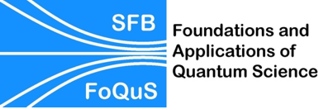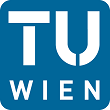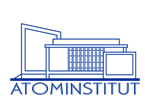 | ||
Projects
| Marie Bonneau Production of twin-atom beams in a moving optical lattice Atoms emitted in twin beams are in a strongly correlated state, very promising for developments in quantum atom optics. Production of such matter beams was demonstrated at Atominstitut in Vienna, where the atom pairs were created through de-excitation by binary collisions. I will present during this talk another method for generation of twin-atom beams, based on four-wave mixing in a moving periodic potential. We implemented this method in Palaiseau and demonstrated the correlation properties of these beams, as well as tunability of the beams’ momenta and populations.
Nicolai Friis Implementing quantum control for unknown subroutines We present setups for the practical realization of adding control to unknown subroutines, supplementing the existing quantum optical scheme for black-box control with a counterpart for the quantum control of the ordering of sequences of operations. We also provide schemes to realize either task using trapped ions. These practical circumventions of recent no-go theorems are based on existing technologies. We argue that the possibility to add control to unknown operations in practice is a common feature of many physical systems. Based on the proposed implementations we discuss the apparent contradictions between theory and practice.
Pjotrs Grišins Tunnel cooling of one-dimensional Bose-Einstein quasicondensates One-dimensional Bose-Einstein quasicondensate (1D BEC) represents an almost perfect experimental realization of an isolated quantum many-body integrable system, posing fundamental questions of equilibration, thermalization and emergence of the classical from the quantum. The understanding of cooling of 1D quasicondensate to ultracold temperatures (<50 nK) is of great conceptual interest, as conventional evaporative cooling, based on the runaway of high energy atoms followed by fast thermalization of the remaining ones, is only expected to be efficient in the 1D geometry on exceedingly long time scales. We present a new model of 1D cooling based on coherent tunneling of atoms out of the quasicondensate through the barrier of the rf-dressed potential. Additionally we present some preliminary experimental results.
Robert Keil Quantum walks and multiple-particle interference in optical waveguides The exchange symmetry of indistinguishable bosons manifests itself in the famous Hong-Ou-Mandel interference on a beamsplitter. Consequently, the statistics of multiple bosons in multi-mode unitary optical networks is heavily influenced by this interference. In the context of quantum walks, the individual trajectories will be correlated. Lattices of evanescently coupled optical waveguides offer a high degree of coherence and versatility and have proven to be a practical platform for the investigation of correlated quantum walks of photons.
Igor Pikovski Universal Decoherence due to gravitational time dilation Phenomena inherent to quantum theory on curved space-time, such as Hawking radiation, are typically assumed to be only relevant at extreme physical conditions: at high energies and in strong gravitational fields. Here we consider low-energy quantum mechanics in the presence of weak gravitational time dilation and show that the latter leads to universal decoherence of quantum superpositions. We derive the decoherence time scale and show that the weak time dilation on Earth is already sufficient to decohere micro-scale objects. In contrast to gravitational collapse models, no modification of quantum theory is assumed. General relativity therefore can account for the emergence of classicality and the effect can in principle be tested in future matter wave experiments with large molecules or with trapped microspheres.
Stefan Putz Protecting a Spin-Ensemble against the Decoherence in the Strong Coupling Regime of Cavity QED Hybrid quantum systems based on spin ensembles coupled to superconducting microwave cavities are promising candidates for robust experiments in cavity quantum electrodynamics (QED) and for future technologies employing quantum mechanical effects. Currently the main source of decoherence in these systems is inhomogeneous spin broadening, which limits their performance for the coherent transfer and storage of quantum information. Here we study the dynamics of a superconducting cavity strongly coupled to an ensemble of nitrogen-vacancy centers in diamond. We experimentally observe for the first time, how decoherence induced by a non-Lorentzian spin distribution can be suppressed in the strong-coupling regime - a phenomenon known as "cavity protection". To demonstrate the potential of this effect for coherent control schemes, we show how appropriately chosen microwave pulses can increase the amplitude of coherent oscillations between cavity and spin ensemble by two orders of magnitude.
Clement Sayrin Atom-Mediated Directional Channeling of Emission into an Optical Waveguide Silica optical fibers transmit light almost without loss and are as such prime candidates for the realization of quantum networks where quantum information is carried by optical photons. Tapered optical fibers with subwavelength diameters additionally provide an evanescent field interface between the guided light and other quantum devices. Our experiment employs a two-colour scheme to optically trap a small ensemble of cesium atoms in the evanescent field surrounding a 500-nm diameter nanofiber [1]. The very efficient coupling between the quantum emitters and the guided light together with the ground-state coherence times of the trapped atoms in the ms-range [2] make this system well suited for fiber-integrated quantum information processing. Here, we show that, in addition, the unique properties of the nanofiber-guided modes allow for the directional channelling of light into the waveguide. The coupling ratio between the two emission directions is directly controlled by the quantum state of the trapped atoms. By preparing the atoms in outermost Zeeman states of their hyperfine ground-state [3], ratios higher than 10:1 have been measured.
Stefan Ostermann Scattering approach to two-colour light forces and self-ordering of polarizable particles Collective coherent scattering of laser light by an ensemble of polarizable point particles creates long range interactions, whose properties can be tailored by choice of injected laser powers, frequencies and polarizations. We use a transfer matrix approach to study the forces induced by non-interfering fields of orthogonal polarization or different frequencies in a 1D geometry and find long range self-ordering of particles without a prescribed order. Adjusting laser frequencies and powers allows to tune inter-particle distances and provides a wide range of possible dynamical couplings not accessible in usual standing light wave geometries with prescribed order. In this work we restrict the examples to two frequencies and polarisations but the framework also allows to treat multicolour light beams with random phases. These dynamical effects should be observable in existing experimental setups with effective 1D geometries such as atoms or nanoparticles coupled to the field of an optical nanofibre or transversely trapped in counterpropagating Gaussian beams.
Per Delsing Propagating photons and phonons interacting with superconducting qubits We study propagating photons and phonons at the quantum level by investigating their interaction with artificial atoms in the form of a superconducting qubits. In the photon experiments, a transmon qubit is coupled to a superconducting 1D transmission line. Strong interaction between the artificial atom and photons is revealed in the reflection of the propagating microwaves. 99.6% extinction of the transmission has been observed. A strong control pulse is used to route incoming photons. The maximum on-off ratio is 99% with a pulse time of 10 ns. The radiation reflected from the artificial atom can be shown to be non-classical, we observe clear anti bunching of the reflected signal and super bunching of the transmitted signal. In addition we show a very strong cross-Kerr effect, 20 degrees per photon. We also present a new type of mechanical quantum device, where propagating surface acoustic wave (SAW) phonons couple to a superconducting qubit through the piezoelectric effect. Three different experiments are presented: i) Exciting the qubit with an electromagnetic signal we can “listen” to the SAW phonons emitted by the qubit. The low speed of sound also allows us to observe the emission of the qubit in the time domain, giving clear proof that the dominant coupling is acoustic. ii) Reflecting a SAW wave off the qubit, we observe a nonlinear reflection with strong reflection at low power and low reflection at high power. iii) Exciting the qubit with both an electromagnetic signal and with a SAW signal, we can do two tone spectroscopy on the qubit.
Gerald Gabrielse The Amazing Electron and Its Moments: Most Stringent Tests of the Standard Model and Proposed Extensions The standard model of particle physics is the great triumph and the great frustration of modern physics. It predicts the value of the electron magnetic moment -- the most precisely measured property of an elementary particle -- to better than a part per trillion. Yet, it cannot explain why a universe made of matter rather than antimatter remains after the big bang, or dark energy, or dark matter, or inflation. Our ACME collaboration has just completed a 12 times more sensitive measurement of the electron's electric dipole moment that takes advantage of the enormous electric field within the ThO molecule. Extensions to the standard model, posited to possibly fix some deficiencies of the standard model, generally predict an electron electric dipole moment that could be within range of this new measurement sensitivity. This is a good place to test such extensions to the standard model insofar as the standard model predicts that the electric dipole moment of the electron is much too small to measure. | |






